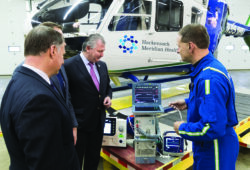Novel, streamlined approach helps buyers make informed product choices that can drive supply chain savings and provides much needed clarity about the cost drivers around physician preference items.
The pace of merger and acquisition activity in the healthcare industry has made plain the growing problem of incompatibility between enterprise resource planning and materials management information systems. Newly amalgamated IDNs typically lack the resources to standardize IT systems, meaning procurement—even if wholly electronic—still lacks operational rigor and the robust master catalog data necessary for buyers to make informed product choices that can drive supply chain savings.
And isn’t that odd in this age of the Amazon shopping cart experience where helpful dashboards, intuitive navigation and recommended products lists come standard?
E-procurement software alone does not make for a pleasant buying experience, nor does it lead to financially prudent product choices, because it has no correlation to supply chain processes. Achieving those twin goals requires that every person who might be ordering any sort of supply—be it a med/surg commodity, capital equipment or an orthopedic implant—have real-time visibility to product availability, attributes, contract status and cost. Ideally, an IDN or facility also has the means to automatically control the type and quantity of products that can be ordered, improving compliance with standardization initiatives that can drive savings beyond the discounted, on-contract price.
These realities drive HealthTrust’s novel, streamlined approach to e-procurement now making its way through proof-of-concept testing at a Tennessee hospital. The user-friendly e-procurement system includes a single master catalog providing buyers with consistent, actionable data with categorizations that are operationally meaningful to providers. That is, HealthTrust’s operator perspective drives what the technology does—not vice versa. Our software has been custom-designed around actual supply chain workflows, with direct input from member facilities on how current processes can be improved.
One result of this provider engagement is that fewer clicks are required to place an order with HealthTrust’s e-procurement system than with other tools on the market. The new system is sure to be a substantial time saver because it shortens purchasing to a two-step process with over half of all fields automatically populated. That compares to the seven steps and eight fields users are currently required to complete for each item they want to order.
We have every reason to believe our e-procurement tool will also result in greater employee satisfaction and compliance with on-contract products. Ultimately, it’ll give our member hospitals that opt to interface with the system a way to bring HealthTrust’s best-in-class contract portfolio closer to purchasing decisions and raise awareness of savings opportunities. It should additionally provide much-needed clarity about the cost drivers around physician preference items, including those spur-of-the-moment buys from suppliers moments before surgery that so often fly under the radar.
The IT resource requirements will be no different than for an out-of-the-box “solution” that requires customization, and facilities will have a system that’s as intuitive for ordering linens and contrast agent as downloading a song from iTunes.
Share Email





